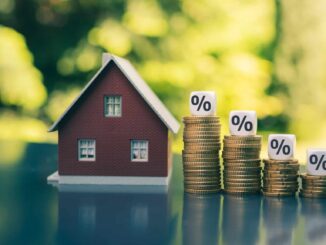
Home affordability is at its lowest point since 2007, according to a new report from ATTOM Data Solutions.
Expenses associated with owning a home—including the mortgage, homeowners insurance, and real estate taxes—now take up 35.1% of a homeowner’s take-home pay, according to the report from the property data analytics firm.
That percentage is up from 32.1% this time last year, and well over the 28% most lenders use as a guideline when it comes to qualifying for a mortgage.
In some places around the country, that number is even higher. ATTOM notes that more than a third of the country is spending 43% of their wages on their home.
“The latest affordability data presents a clear challenge for home buyers. While home prices are increasing and mortgage rates remain relatively high, these factors are making homes less affordable,” Rob Barber, CEO of ATTOM, wrote in the report. “It’s common for these trends to intensify during the spring buying season when buyer demand increases. However, the trends this year are particularly challenging for house hunters, more so than at any point since the housing market boom began in 2012.”
Home prices are rising faster than wages
Part of the problem is that wages aren’t keeping pace with residential real estate prices.
ATTOM notes that annual home prices increased at a much faster rate than wages in nearly half of the counties included in the report. Some of the places where those gaps were most evident included Los Angeles County in California, Cook County in Illinois, and Maricopa County in Arizona.
And it’s not just the monthly mortgage payment that is hitting homeowners harder than usual; home upkeep costs are ticking up as well. With those figures included, homeowners are spending 43% of their wages on their home, something ATTOM considers “seriously unaffordable.”
Certain areas are less affordable than others
It’s not surprising that the West and Northeast are among some of the most unaffordable regions in the country. In California’s Santa Cruz County, homeowners need 113.8% of annualized local wages to afford a home—in other words, more than what many people even earn. It’s a similar story in New York’s Kings County, where residents need to spend 111.8% of annualized local wages to keep a roof over their head.
But, it’s not all bad news. It looks like homeowners in places like Pennsylvania’s Cambria County and Schuylkill County take the least amount of money from their paycheck, with an annual cost of $20,668 and $27,277, respectively.
That being said, almost every market around the country remains less affordable than it has been in nearly 20 years.
“Buyers continue to face a lack of affordability in today’s housing market,” says Realtor.com Chief Economist Danielle Hale. For first-time buyers, “when making the choice between renting or buying, the monthly costs in all of the 50 largest metros reviewed in a recent Realtor.com study tip the scales in favor of renting.”
Real estate agent Mike Wall says he’s seen these impacts firsthand in Dayton, OH, where he calls the national trend of declining home affordability “palpable.”
“While our region hasn’t escaped the affordability crunch, the effects aren’t as pronounced as in major metropolitan areas,” he says, echoing ATTOM’s findings. “Compared to cities like San Francisco or New York, Dayton remains relatively more affordable, but prices have indeed been rising steadily.”
Hope for homebuyers
But this doesn’t mean there’s no hope—particularly if you already own a home and are buying another.
“With home equity at record highs, current owners can tap into these funds to mitigate some of the sting of higher mortgage rates. In fact, down payments are up from a year ago, suggesting that some buyers are using this route,” points out Hale.
To offset high costs, hopeful first-time homebuyers have had to get creative to get into a new home.
“Many are borrowing from family to cover down payments or closing costs,” Wall says. “Others are adjusting their expectations; for instance, purchasing smaller homes or homes in need of renovation that they might have overlooked in a softer market.”
He says he’s also seen more buyers considering less traditional routes, like rent-to-own scenarios, or exploring neighborhoods farther from city centers where prices might be more reasonable.
“In order to see affordability improve, we need to see more building,” adds Hale. “Realtor.com estimates that the U.S. lacks between 2.5 and 7.2 million homes that were needed to keep up with household formation over the last decade. Builders are working to make headway against the shortage, and appear to be adjusting the location and features of new homes to create more affordable supply.”
For example, in May 2024, 48% of new homes sold were priced below $400,000 compared with just 43% in the prior year.
“In the meanwhile, although home prices are rising, those seeking affordability do have one advantage in today’s housing market: more options,” Hale says. “The overall number of homes actively for sale rose 35.2% from a year ago in May 2024, and the number of homes in the more affordable $200,000 to $350,000 category rose by 46.6%. More homes at relatively affordable price points will help give shoppers some relief from relentlessly higher costs.”
Real Estate – Latest NYC, US & Celebrity News | New York Post

